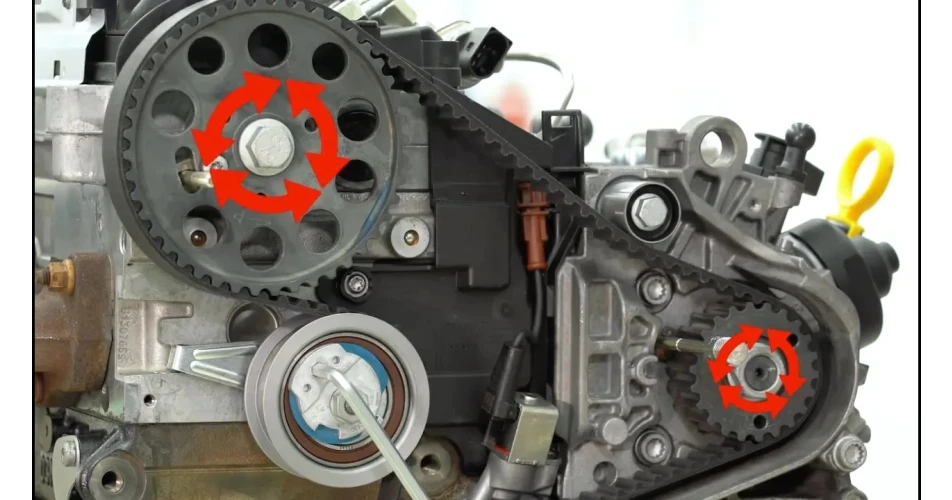Adjusting the timing belt tensioner on some Volkswagen and Audi 1.6/2.0 TDi EA288 engines, from 2012 on, requires a few particular steps that may not be obvious to a mechanic. If the tensioner is not set correctly, catastrophic engine failure may occur. REPXPERT Alistair Mason provides information on how to avoid this potential problem.
The REPXPERT Tech Hotline is seeing & hearing from a lot of garages about these timing belts becoming slack after replacement, causing the tensioner to fail. In some instances, the timing belt can fail, with catastrophic results.
It seems that the camshaft & high pressure fuel pump pulleys are not being slackened during the timing belt replacement process. If not done correctly when tensioning the new belt, the tension is only set on one span of the belt. The other two spans are still slack, as the locked pulleys and shafts will not rotate to allow the slack to be pulled to the tensioner. When the belt beds in, the tensioner rotates to take up the slack until it hits the stop tab. As the vehicle continues to run, the tensioner keeps hitting the stop tab until it breaks, then failure occurs.
Visually, neither the camshaft or high pressure fuel injection pump sprockets appear to have slotted adjustment holes. However, if you examine them carefully, the camshaft has a small Torx bolt in a small slotted hole, and the fuel pump sprocket is a two-piece unit, the sprocket part rotates back and forth on the inner hub.
Tensioner set up instructions Lock the camshaft sprocket with a pin, to counterhold the camshaft sprocket. Slacken the centre bolt 90°, and loosen Torx bolt to allow sprocket to move back and forth in the slotted hole.
Lock the fuel pump with a pin to counterhold the sprocket. Slacken the centre nut 90°, allowing the pump sprocket to rotate back and forth approximately 3 teeth. The Injection Pump sprocket timing marks must be in alignment.
Even though the locking pins will still be in place, the camshaft and fuel pump sprockets must be free to rotate, allowing uniform belt tension across the complete circumference of the belt.
If the camshaft and injection pump sprockets are not released prior to the belt tensioner being set, then only the left hand belt span will be tensioned (shown in red - from the crankshaft sprocket up to the camshaft sprocket). Consequently, the rest of the belt (shown in black) will be incorrectly tensioned, and when the engine is started an aggressive belt amplitude will be created.
If not rectified, this amplitude (or vibration) will eventually destroy the tensioner, often causing catastrophic engine failure.
The REPXPERT video that gives all of the details about properly setting the timing belt tension can be seen
here.
